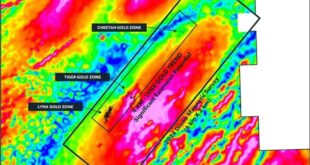A new approach using multiple swarms of drones could be used to manage natural disasters like forest fires.
The technique is being tested by researchers at the Indian Institute of Science (IISc).
Climate change is making catastrophic weather events like wildfires more frequent and severe.
“A swarm of drones could be the solution,” says Suresh Sundaram, Professor in the Department of Aerospace Engineering, IISc.
The use of drones in tackling natural disasters is not new, though they have yet to be used in India, and Australian agencies are increasingly interested. But the new study, published in the journal IEEE Transactions on Systems, Man, and Cybernetics: Systems, adds a new element to the technology.
Rob Webb, CEO of the Australasian Fire and Emergency Service Authorities Council (AFAC), says drones are beginning to be used in operations across the continent.
“The Emergency Management sector in Australia is increasing their use of drones particularly in urban, search and rescue and flood operations,” says Webb in a statement shared with Cosmos. “Rapid damage assessments are one example that allow operators to gather intelligence immediately after a disaster.”
IISc researchers have developed a special kind of algorithm which allows for a coordinated multi-swarm of drones to quell forest fires.
“By the time somebody identifies and reports a fire, it has already started spreading and cannot be put out with one drone,” says Sundaram. “You need to have a swarm of drones. A swarm that can communicate with each other.”
The new software allows the drones to make independent decisions and communicate with each other. Each drone will independently calculate the fire’s size and potential spread.
“These decisions are made by the drones,” says Sundaram. “They figure out which cluster of fire is going to spread faster, and allocate the required number of drones to put out that fire while the others look for other fire clusters.”
Researchers took inspiration from a single-celled marine predator called Oxyrrhis marina.
“When foraging, it firsts take longer steps to explore the area. Once it feels like it is closer to the food source, it will reduce the step length and then start exploring the area in more detail,” explains lead author Josy John, a PhD student at IISc.
“The temperature sensors in the drones look for a minimum [threshold] value. When that is reached, the drones reduce their search step, because the fire is near.”
They have tested the AI-enabled fire detection using thermal cameras and the payload drop mechanism to extinguish fires. Full-scale field tests are still on the horizon.
“In the bushfire-fighting space, the potential uses are large, but it will take time to make sure the technology can be integrated safely,” Webb adds.
Such technology may be more useful in sensing and intelligence gathering than in direct firefighting, Webb says.
“Agencies are starting to investigate whether drones have the capacity to replace conventional aircraft to carry the sensing technology that is required for bushfire operations. These can be smaller platforms with local views, to larger platforms where aircraft can be deployed for many days to remotely sense larger swathes of our landscape. The sensing technology is perhaps of more importance than the platform that deploys the technology.”
Ultimately, Webb stresses, further testing and guarantees of the technology are required before it can be implemented on a large scale.
“With new technology comes challenges that will be overcome with time. Safety of life will remain the primary focus of fire authorities everywhere. Technology provides an opportunity for us to approach this is in safest and most effective way.”
![]()
 Unmanned Aerial Vehicle The latest drone news
Unmanned Aerial Vehicle The latest drone news



